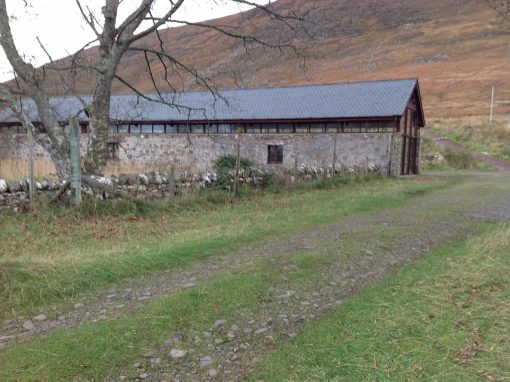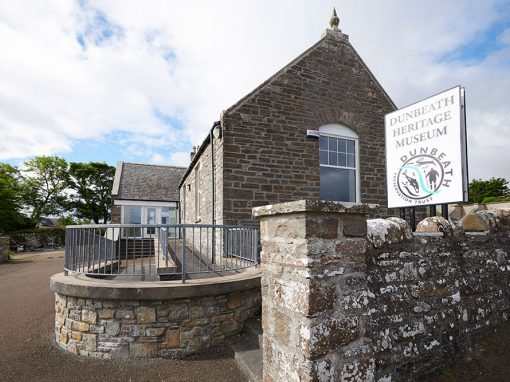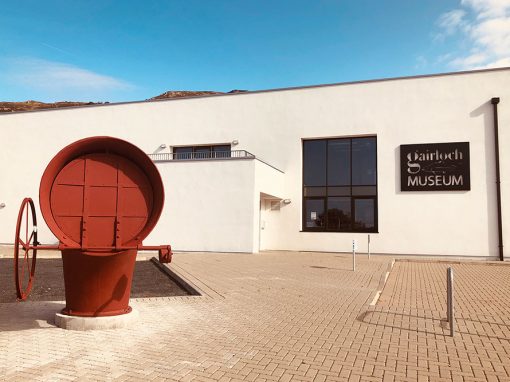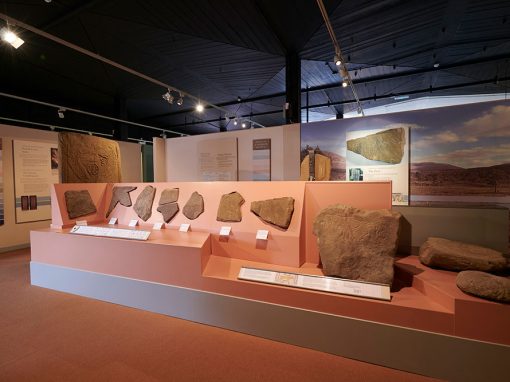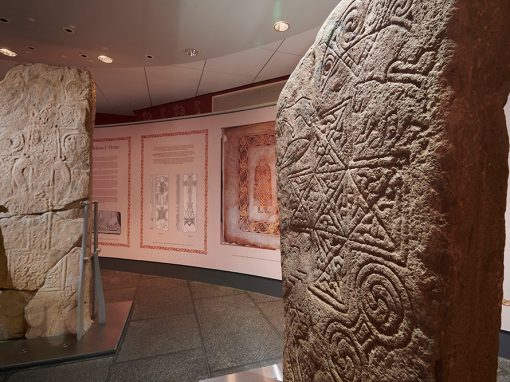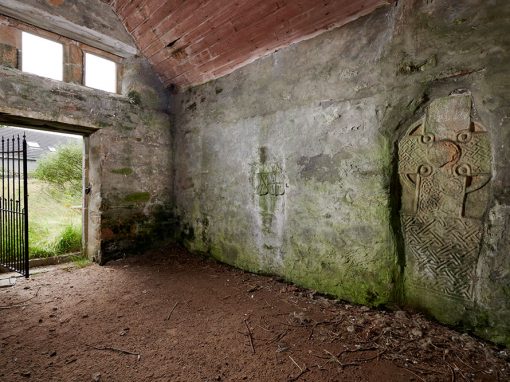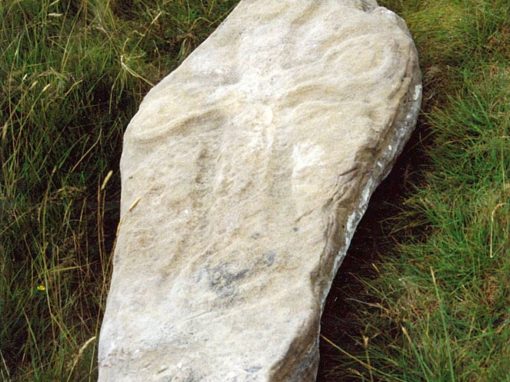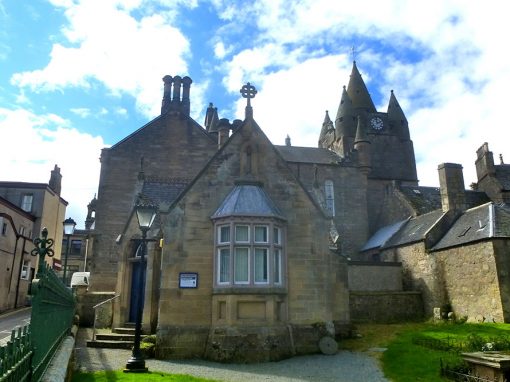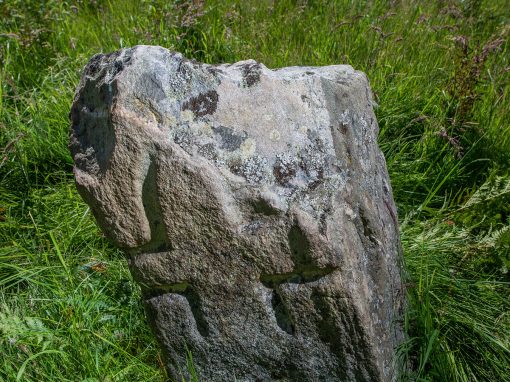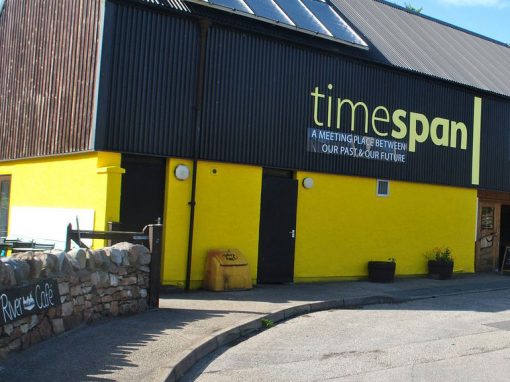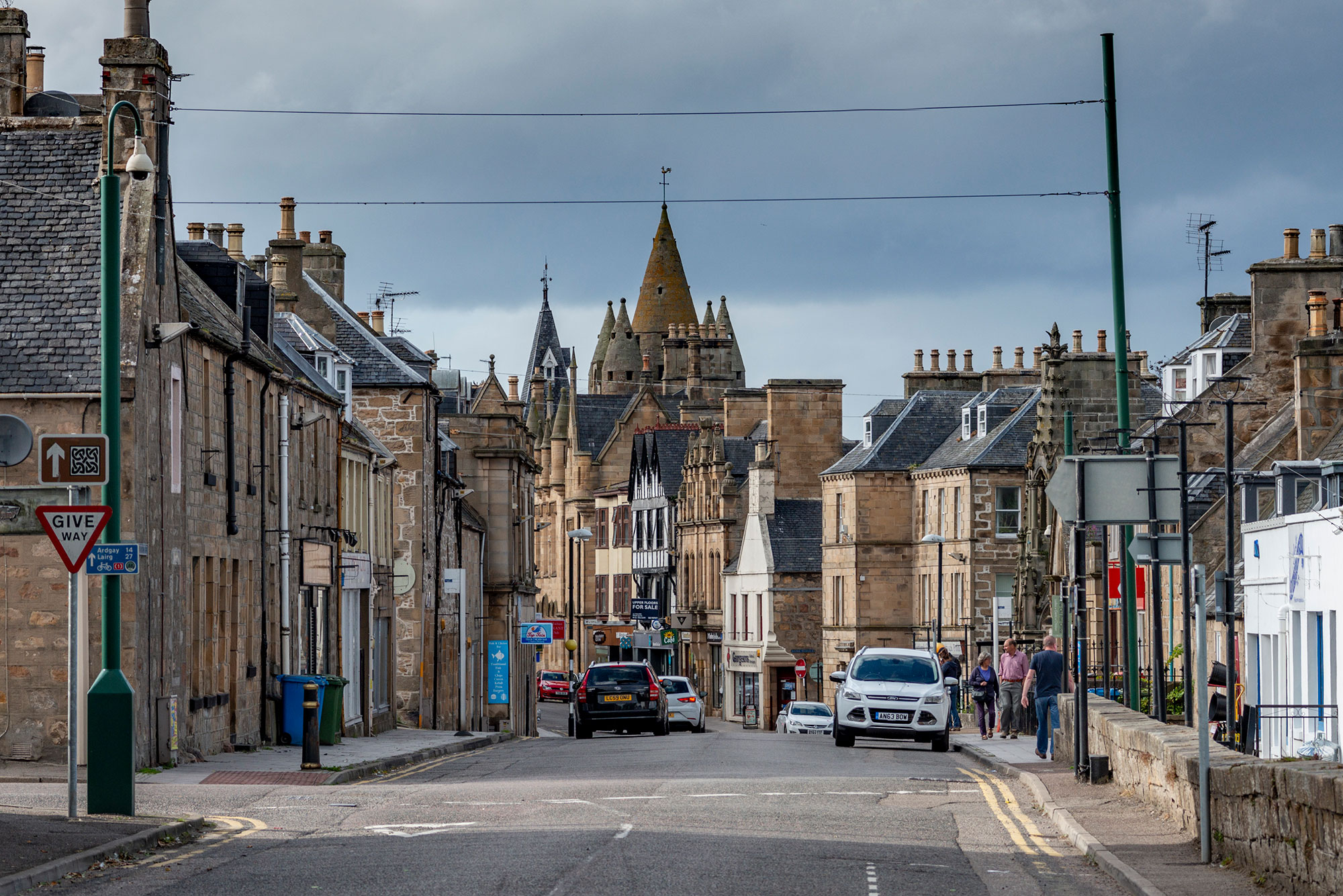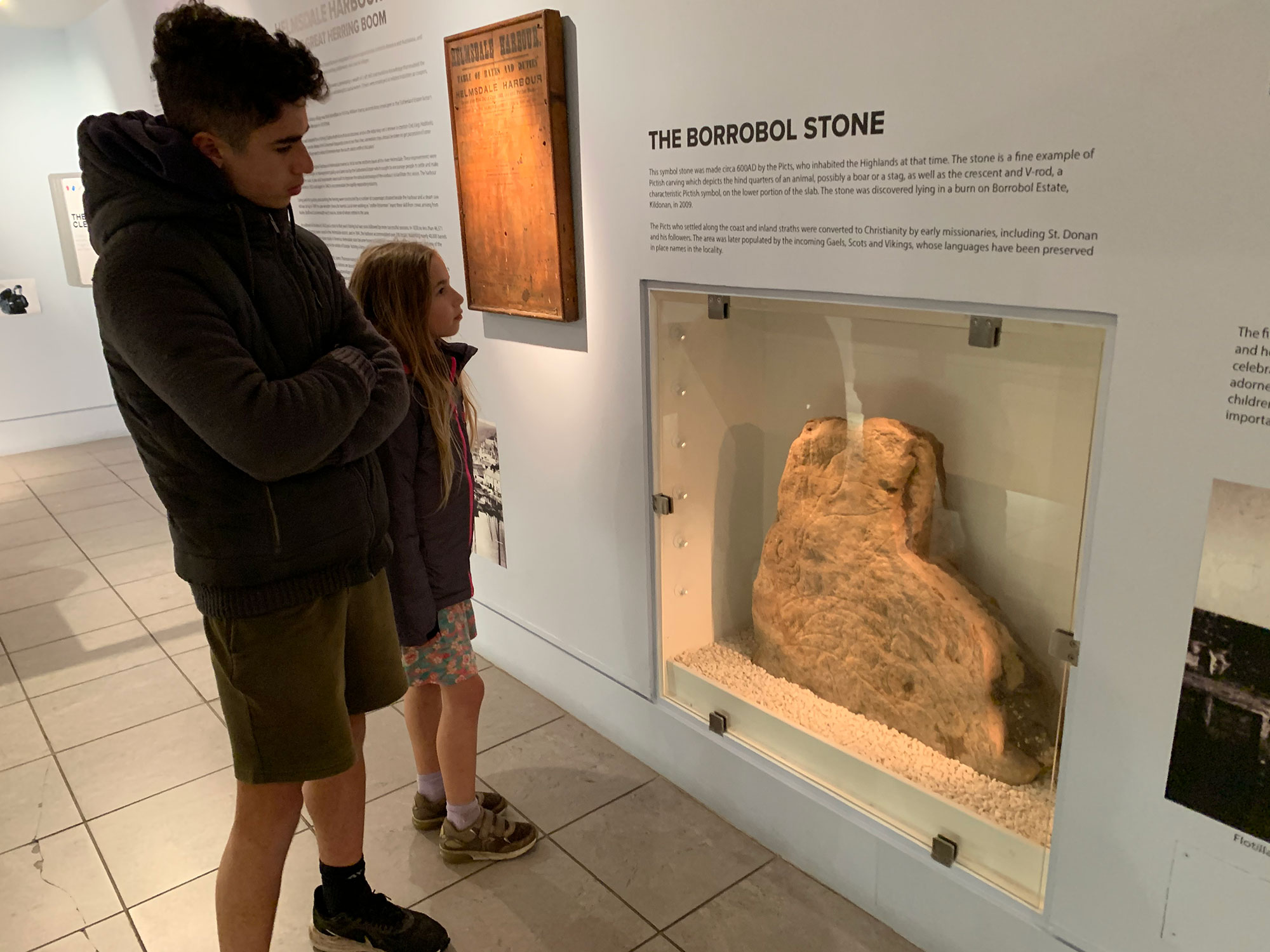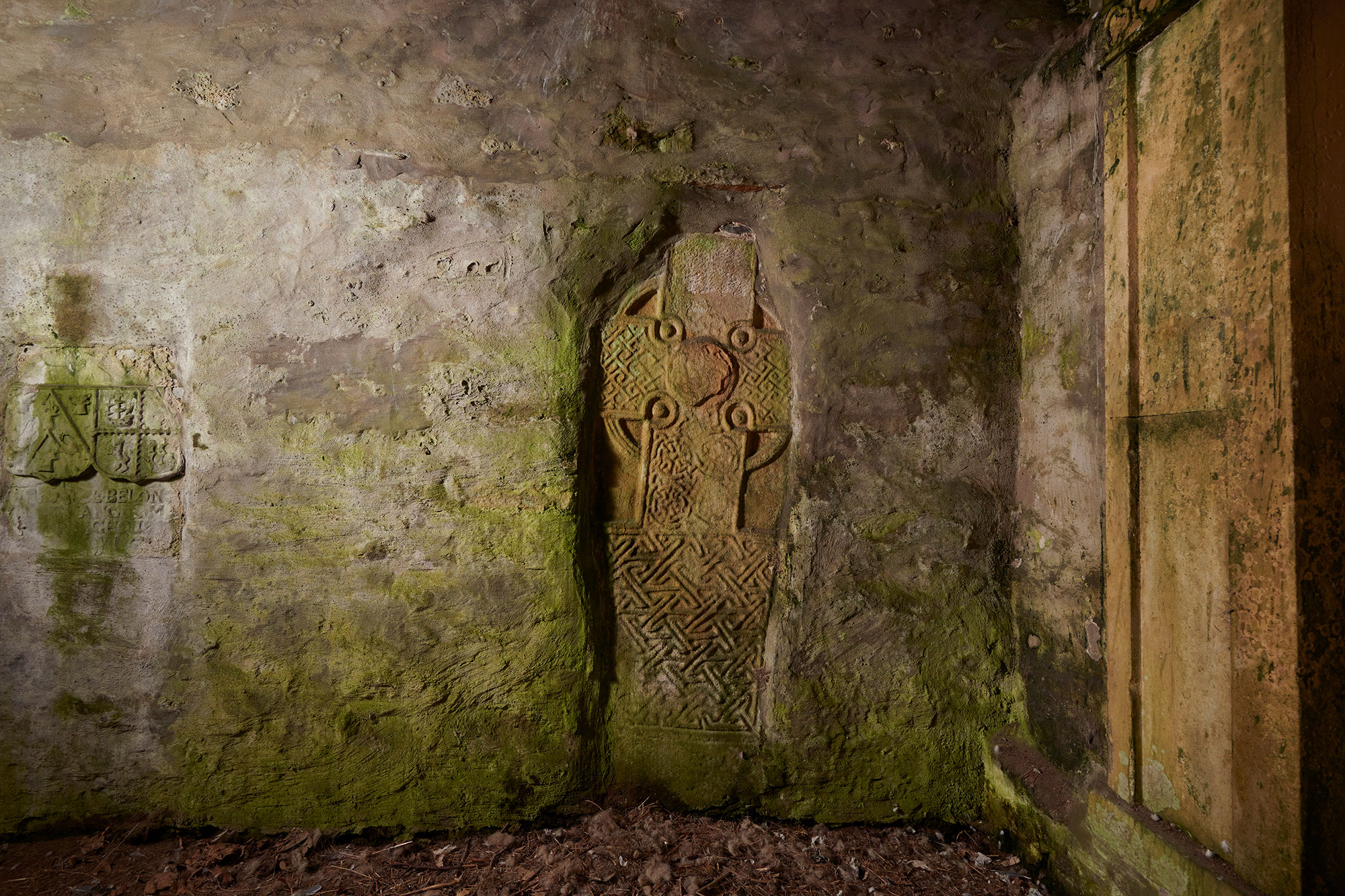
Hill fort

Museum/centre

Outdoor carved stone

Hill fort

Museum/centre

Outdoor carved stone
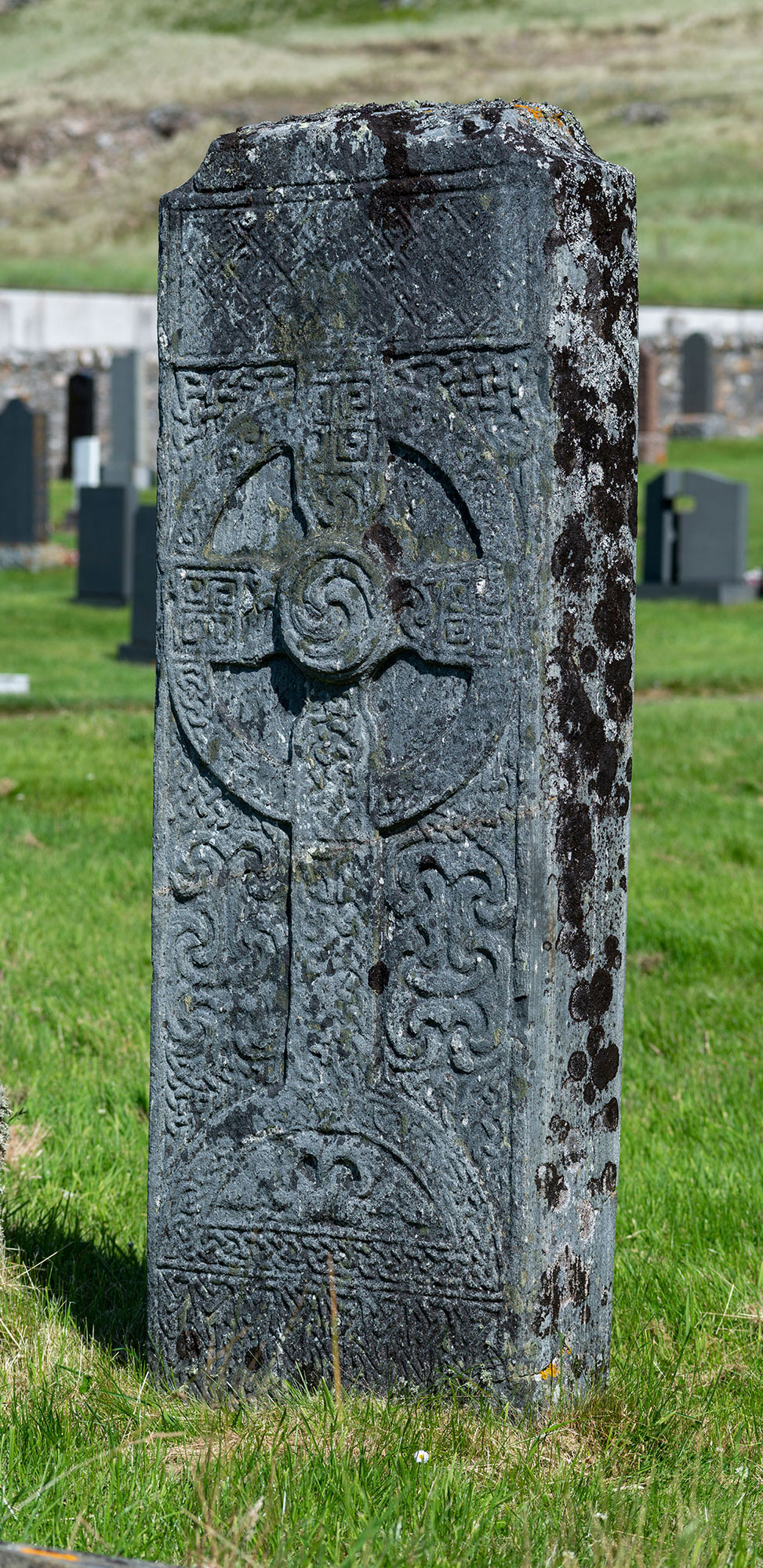
The Farr Stone, Strathnaver Museum © Ewen Weatherspoon
NC500
Costa a Tuath 500
Discover the Pictish ‘hidden gems’ of the North Highlands
Lorg ‘seudan falaichte’ Cruithneach na Gàidhealtachd a Tuath
516 miles (multi-day trip)
This itinerary follows the iconic NorthCoast500 road trip route around the north coast of Scotland and takes you to some of the ‘hidden gem’ Pictish sites along the route. Slow down your NC500 tour, venture off the beaten track, and immerse yourself in a lost world of Pictish warriors, kings, monks and enigmatic carved stones.
Inverness Museum and Gallery
Tain and District Museum
Dunrobin Castle Museum
Timespan
Dunbeath Heritage Centre
The Lybster Stone
North Coast Visitor Centre
Reay Cross Slab
The Priest’s Stone
Strathnaver Museum
Red Priest’s Stone (detour)
Gairloch Museum
Applecross Heritage Centre

Dunrobin Castle © Ewen Weatherspoon
Many people start in the capital of the Highlands and we begin with Inverness Museum and Gallery where you can view a showcase collection of Pictish artefacts. Along with twelve symbol stones, the museum displays fine Pictish metalwork and a unique carved stone pendant. Leaving the city and travelling on the A9 north, the next stop is the medieval burgh of Tain where you can easily spend a half day exploring the old town. Tain and District Museum gives visitors a chance to step back in time to discover the story of this town which has important royal connections. From here you could make a detour from the NC500 tp pick up the Easter Ross (Tarbat) Peninsula Itinerary. The peninsula is off the main tourist trail but rewards visitors with an incredibly special history and heritage. Take your time to explore.
Back on the NC500 heading north, Dunrobin Castle Museum has a showcase collection of Pictish stones and a whole or half day visit here can be combined in a ticket to the castle and beautiful gardens.
Travelling up the coast along the A9 takes you to the village of Helmsdale. This nineteenth century planned village was built to resettle communities removed from the surrounding straths during the Highland Clearances. Timespan houses the Borrobol Stone, an enigmatic carved Pictish stone found in a local river in 2009.
Many of the small villages you pass through as you travel north have their own unique local culture and history. A visit to Dunbeath Heritage Centre not only gives an opportunity to see its Pictish carved stone but also to enter a portal to explore more about the ancient landscape of the northeast and stories of its people.
Smaller Pictish stones can be found in several places around the north east coast of Scotland. These stones are often carved with a just a simple cross and are much smaller than the impressive Pictish cross slab stones, but still have an important story to tell. For those with an enthusiasm for discovery, Lybster Stone, The Priest’s Stone, Reay Cross Slab and The Red Priest’s Stone can all be visited but note that the sites have differing levels of accessibility.
The town of Thurso on the north coast is the area’s largest town and home to North Coast Visitor Centre. Here you can find one of the Highland’s most outstanding collections of Pictish stones and displays that allow visitors to discover the story of the Picts in this most northerly part of Scotland. The history and heritage of this area is also steeped in a Viking past and many place names reflect the influence of Norse culture. Strathnaver Museum is the perfect place to make an extended stop and explore this unique history. The Farr Stone stands outside in the graveyard grounds of the museum building which was once a church. Now a local history hub and the Clan Mackay Centre, the museum is a great place to immerse yourself in the past.
The stronghold of the Picts was north eastern Scotland and as you travel westwards, the Pictish story becomes more fragmentary. The scenery of northwest Scotland is markedly different. At the time of the Picts, these mountains and deep glens were home to the Scots of Dal Riata and evidence of Pictish influence is rare.
Gairloch Museum is special in that it is one of only a couple of places on the west coast where you can see a Pictish stone. This carved symbol stone is displayed as part of a wider exhibition exploring local history and culture. Gairloch Museum was awarded Art Fund Museum of the Year 2020.
Applecross on the south west edge of the NC500 route has a special story to tell in the history and religion of the Picts. The monastery of Applecross was founded in the seventh century AD by the Irish monk Maelrubha. Enjoy a peaceful walk to view the Pictish stones here at Applecross Heritage Centre which tell of a religious community with important spiritual connections to the more famous Isle of Iona.
